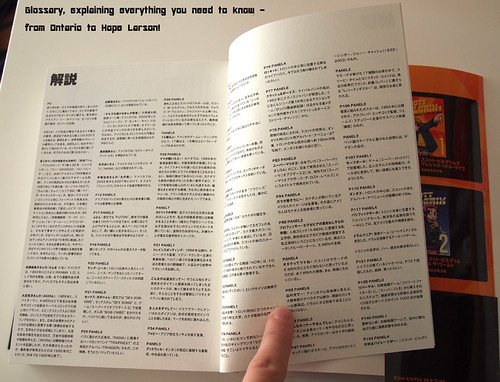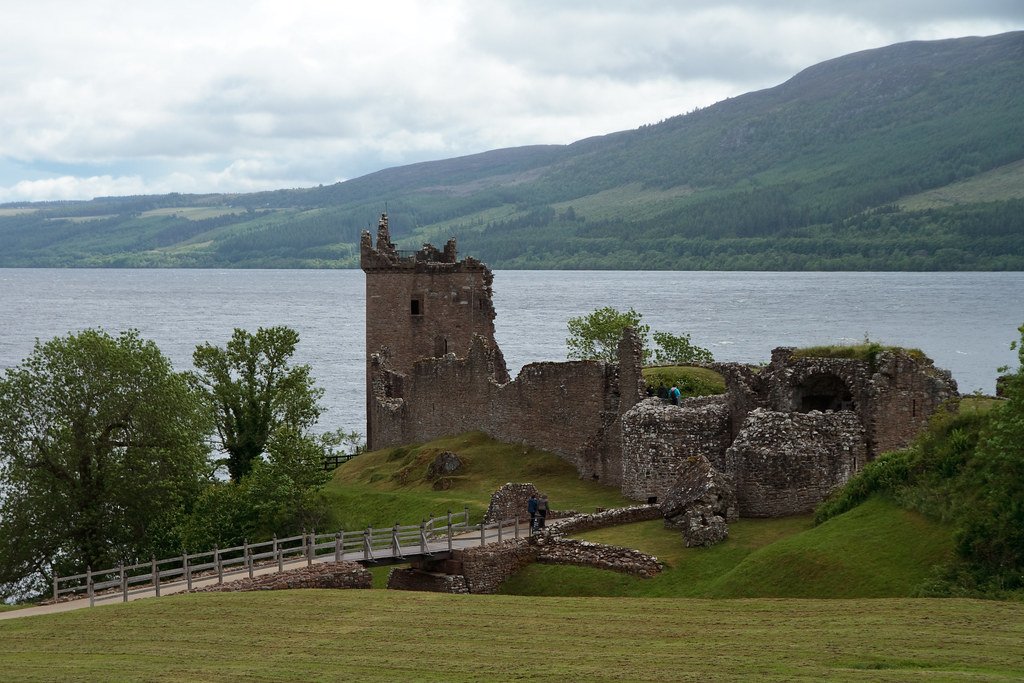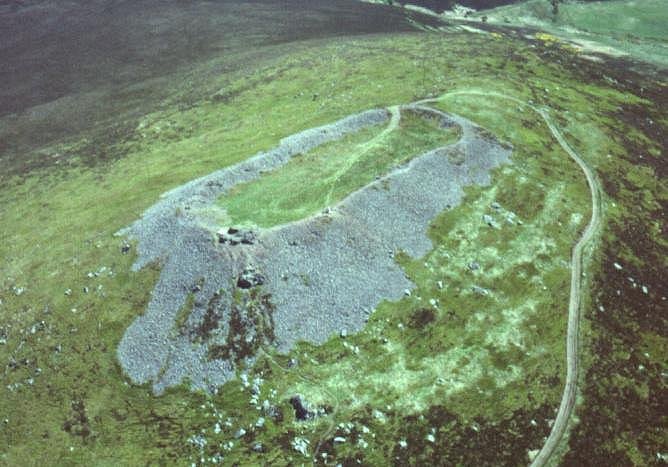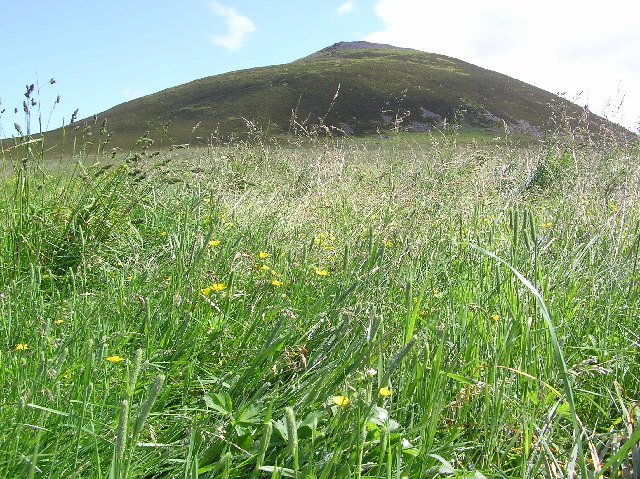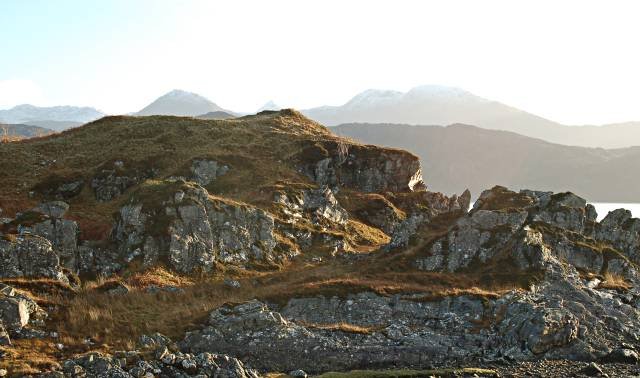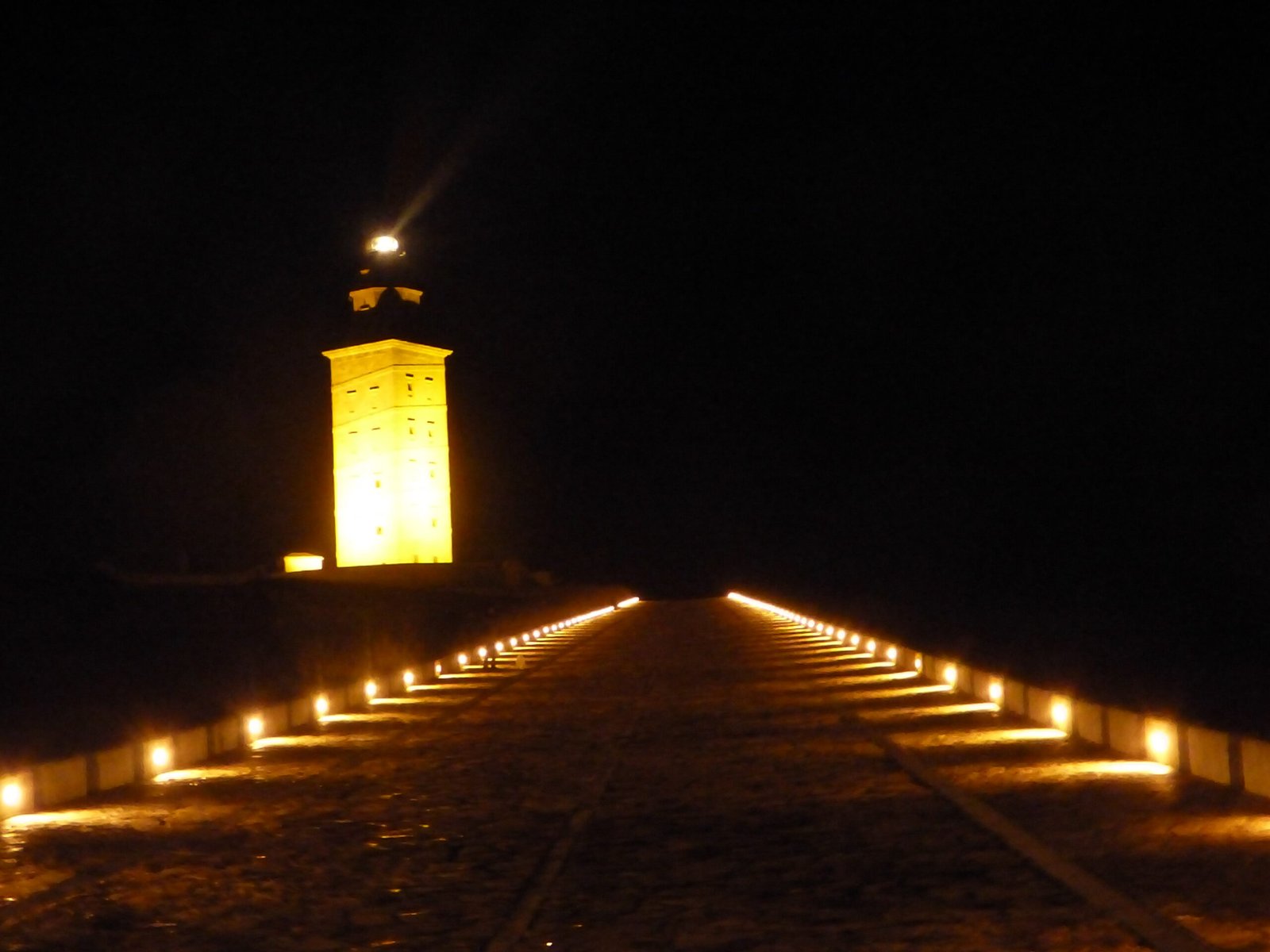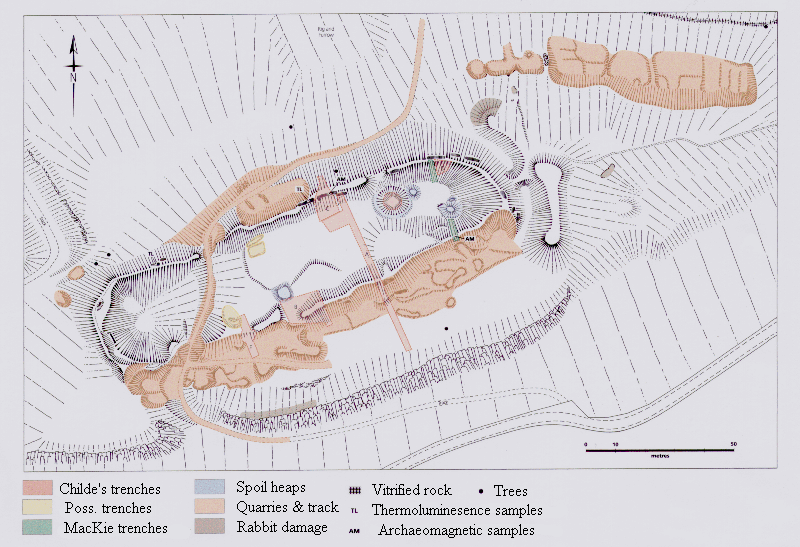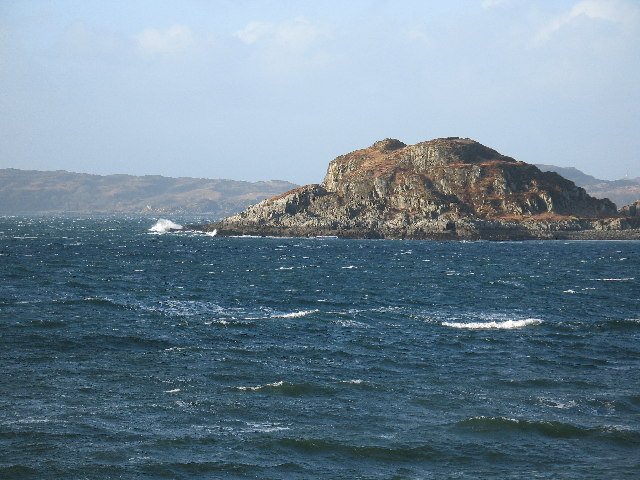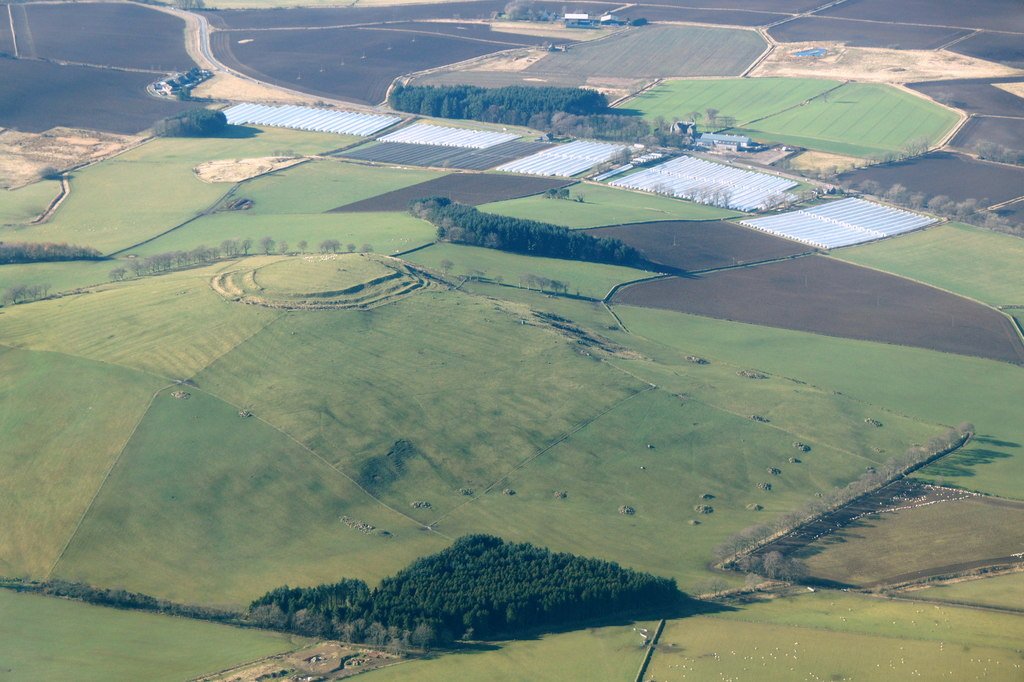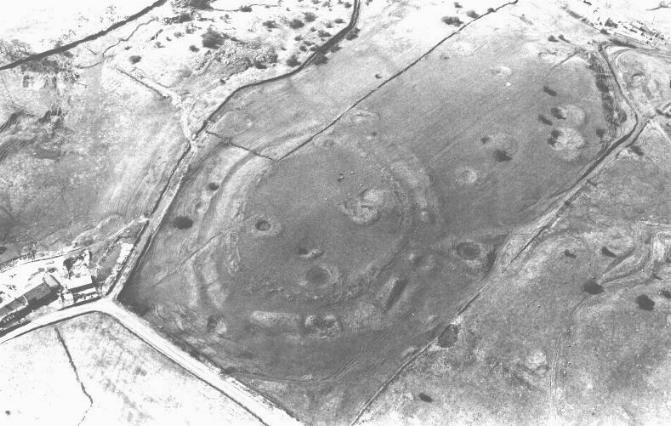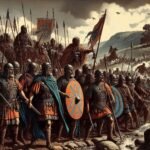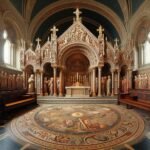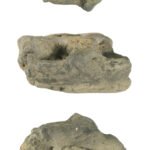Contents
- 1 Attempts to Classify Vitrified Forts
- 2 Visual / quantitative classes – how much of the wall is glassy?
- 3 Structural classes – how was the rampart built?
- 4 Process-based classes – why did it melt?
- 5 Putting the dimensions together
- 6 Outstanding issues and proposals
- 7 Key sources to explore further
- 8 Take-away
- 9 Exploration of vitrified fort classification
- 10 Dating of Forts
- 11 Practical tips for future dating campaigns
- 12 Materials available to burn
- 13 Conclusion
- 14 Number of Ramparts/specific relationship between vitrified ramparts and others
- 15 Types of Rock used in Vitrification
- 16 Research priorities
- 17 The big picture – lithology really does differ
- 18 Importing fusible stone – did it happen often?
- 19 Bottom line
- 20 Geographic Distribution
- 21 A Forced Migration Perspective
- 22 Draft multi-axis classification model for vitrified forts
- 22.1 Axis C – Rampart construction
- 22.2 Axis E – Extent / degree of vitrification
- 22.3 Axis P – Process / motive
- 22.4 Axis T – Chronological slot
- 22.5 Axis L – Rampart layout & vitrification pattern
- 22.6 Axis R – Rampart lithology
- 22.7 ( Optional ) Axis F – Fuel-load / firing strategy
- 22.8 Putting it together
- 23 Minimum dataset per rampart section
- 24 Immediate tasks to flesh out the model
Attempts to Classify Vitrified Forts
Archaeologists have suggested ways to organise the very varied “vitrified forts” into formal classes – especially schemes that distinguish forts by how much and what kind of vitrification their ramparts show. Below is a digest of the main classification ideas that have been proposed in the literature and how researchers actually use them in field reports and laboratory work.
Visual / quantitative classes – how much of the wall is glassy?
| Short label used in the field | Typical field description | Approximate petrographic criterion† | Classic examples |
|---|---|---|---|
| Incipient / slightly burnt | Only scattered stones show a thin glassy skin; wall is still basically drystone | < 10 vol % melt between grains | Castle Law (Abernethy) |
| Patchy / partially vitrified | Continuous runs of fused stone in some stretches, but rubble core still recognisable elsewhere | 10 – 50 % melt; fused zones < ½ of perimeter | Craig Phadrig, Broborg |
| Thoroughly / totally vitrified | Wall has become a single slag-like mass for most of its length and through most of its thickness | > 50 % melt; glass bridges main blocks | Tap o’ Noth, Dunagoil |
†Thresholds vary from author to author; MacKie (1976) suggested ⅓ and ⅔ as the break-points, while Wadsworth et al. (2017) prefer 10 % and 50 % based on image-analysis of thin sections.
Why it matters: the degree class is now routinely logged before sampling because melt fraction controls post-fire strength and the chance of recovering archaeomagnetic dates.
Structural classes – how was the rampart built?
| Construction class (after Cotton 1954 & Ralston 2006) | Key engineering feature | Vitrification style that usually develops |
|---|---|---|
| Timber-laced core | Horizontal and vertical timbers woven through a rubble core | Glass strings around vanished timbers; mottled interior while stone facings survive |
| Timber-reveted front | Timber box filled with rubble; timbers only on outer face | Fused façade slabs; vitrification tapers rapidly inwards |
| Stone-only wall | No timber, just coursed blocks or dumped boulders | Localised glassy lenses (needs external bonfire) |
Field observers still use Cotton’s labels in site notebooks because they predict where to look for the hottest part of the fire.
Process-based classes – why did it melt?
| Process class (Youngblood & Fredriksson 1978; Kresten 2004) | Diagnostic criteria | Current consensus |
|---|---|---|
| Creative / constructive | Vitrification took place before final occupation; glass forms a neat inner skin, no destruction layer | Rare; only a handful of Swedish and French forts plausibly fit |
| Destructive / deliberate burning | Thick destruction layer sealed by glass; artefacts trapped in slag | Dominant explanation for “thoroughly” vitrified Scottish forts |
| Incidental | Isolated blocks fused, often on summits that attract lightning; no burning debris | Accepted for many Scandinavian hill-top enclosures |
Recent micro-CT work shows that “creative” walls would in fact weaken if the local stone is quartz-rich, reinforcing doubts about this motive.
Putting the dimensions together
Most excavators now record three codes per rampart section, e.g. TAP o’ Noth = TLC-T (Timber-Laced Core, Thorough vitrification, Destructive). This multi-axis approach is the one implicitly used in the Atlas of Hillforts of Britain and Ireland database.
Outstanding issues and proposals
- Objective thresholds. Petrographic/image-analysis thresholds (melt % or glass connectivity) are replacing the older “eyeball” terms.
- Link to dating. Archaeomagnetic and TL dating need careful sampling from the hottest class-III (thorough) zones; mixed classes can blur palaeofield directions.
- Regional bias. Timber-laced types dominate Scotland and Sweden; stone-only types dominate Iberia and Brittany – classification helps compare like with like.
- Recommendation. A formal three-letter code (construction–extent–process) plus a numeric melt percentage would make reports interoperable and testable.
Key sources to explore further
- Cotton, M. A. “British Camps with Timber-laced Ramparts.” Archaeological Journal 111, 26-105 (1954).
- MacKie, E. W. “The Vitrified Forts of Scotland.” In D. W. Harding (ed.) Hillforts, 205-235 (1976).
- Ralston, I. B. M. Celtic Fortifications (Tempus, 2006) – chap. 6 on vitrified walls.
- Youngblood, E. et al. “Celtic Vitrified Forts: Chemical-Petrological Study.” J. Archaeol. Sci. 5, 99-121 (1978).
- Wadsworth, F. B. et al. “Local geology controlled the feasibility of vitrifying Iron Age buildings.” Sci. Rep. 7, 40028 (2017).
- Kresten, P. “The Vitrified Forts of Europe: Saga, Archaeology and Geology.” ICAM conference paper, 2004.
- Sjöblom R. et al. “Assessment of the reason for the vitrification of a wall at a hill-fort.” JAS Rep. 43 (2022) – good discussion of “creative” vs “destructive” evidence.
Take-away
No single, universally adopted taxonomy exists, but three complementary axes – extent of melting, rampart construction, and inferred motive – are now widely used together. Using them systematically lets researchers compare forts built in very different stones, climates, and social contexts without losing sight of how “vitrified” each wall really is.
Exploration of vitrified fort classification
Currently, there is a single grouping of vitrified forts, it is our contention that in reality only a few forts should be classified as such, and that analysis would be helped if this classification was further refined. In order to perform better analysis of vitrified forts, it will be necessary to attempt to classify the various features, the following discussion examines some possible options.
General Classification
1. Partially Vitrified or burnt forts where isolated areas of the fort are affected.
2. Totally Vitrified forts which have large areas of even vitrification.
Partial vitrification can occur where an intense heat causes vitrifaction in one or more isolated locations along part of the rampart, or where the temperatures were never so high as to cause the rock to melt. Such forts could include Almondbury in Yorkshire where the excavation evidence indicates the fire started from a small area and the heat involved may not have been as high as 600 C. The causes of such vitrification and burning could be the result of attack or from accidental fire damage due to gateways or buildings burning in a prolonged and uncontrolled manner. In these cases it is probable that relatively small areas of burnt stone may occur, however it is our conjecture that since the design of the rampart meant fire would spread only with difficulty and would be easily doused by the inhabitants of the fort.
that ese types of forts from forts which are Totally Vitrified. Also included in this classification are forts which have been burnt as a result of a battle, the reason for this is that the intense heat required to cause the sorts of vitrification observed could only be the result of careful planning, it is not likely that enough fuel would have been easily to hand.
Total vitrification appears to be the application of an extreme temperature evenly throughout the entire length or significant section of the rampart for a significant time, to the extent that the rock face of the rampart actually melts and forms a glassy or bubbled surface. Craig Phadrig for example shows signs of intense heat vitrification along the entire 230m circumference of its interior rampart. Another example is Wincobank which has heat vitrification along its 430m rampart
Dating of Forts
Only a minority of the c ≈ 200 known vitrified forts have firm calendar dates. Yet every time we do pin down when walls were fired it sheds light on why and how the vitrification happened and lets us compare otherwise-dissimilar structures. Below is a concise review of (1) the dating tools that have proved reliable on vitrified stonework, (2) a Europe-wide timeline built from the dozen or so best-dated forts, and (3) a suggestion for folding chronology into the multi-axis classification we sketched earlier.
Dating tools that have worked on vitrified ramparts
| Technique | What is sampled | Typical precision | Strengths / caveats | Key uses |
|---|---|---|---|---|
| Archaeomagnetic direction + intensity | Melted stone/glass still in situ | ± 50–150 yr once tied to a regional SV curve | Directly dates cooling after peak heat; works even where charcoal is gone; needs undisturbed orientation | Scotland, Sweden, Portugal |
| Thermoluminescence (TL) | Loose fused clasts or wall fragments | ± 200–500 yr | Measures last heating ≥ 400 °C regardless of later disturbance; sensitive to residual doses & geologic TL | Early Scottish programme; check anomalous young ages (geochronometria.pl) |
| Radiocarbon | Charcoal sealed beneath slag or in destruction layer | ± 25–50 yr (1 σ) | Easy to sample; must show the charcoal was burnt in the firing, not decades earlier | Dunnideer, Tap o’ Noth |
| Dendro-chronology | Charred timber lacing if preserved | single-year | Rare (the fires usually consumed the wood) | Alpine, Baltic forts |
| OSL on vitrified quartz | Glassy skin on quartzite blocks | still experimental | May complement TL where internal dosimetry is complex |
Archaeomagnetism has become the work-horse because the vitrification itself creates an ideal thermoremanent magnetisation, while radiocarbon provides a cross-check when short-lived charcoal is trapped in the same firing event.
A working chronology of dated vitrified forts
| Fort (country) | Calibrated firing date(s) | Dating method(s) | Extent / construction class | Source |
|---|---|---|---|---|
| Bernstorf (Bavaria, DE) | after c. 1320 BC | ^14C on vitrified rampart oak; micromorphology | Patchy; timber-laced Bronze-Age enceinte | |
| Misericordia / Serpa (PT) | 842 – 652 BC | Archaeomagnetic ± 100 yr | Thorough on stone-only wall | (ResearchGate) |
| Dunnideer (Aberdeenshire, UK) | 606 – 257 BC (arch-mag); 390 – 160 BC (^14C) | Both | Thorough; timber-laced oblong fort | (Aberdeenshire Council) |
| Seven Scottish forts (Craig Phadrig, Dun Deardail, Knock Farril …) | Cluster at 400 – 100 BC (re-modelled) | Legacy arch-mag re-calibrated with modern field model | Mostly partial → thorough; timber-laced | (ResearchGate) |
| Tinnis (Borders, UK) | Late 3rd – late 6th c AD (stratified ^14C) | ^14C on burnt timber | Partial; timber-laced hilltop | (guard-archaeology.co.uk) |
| Tap o’ Noth (Aberdeenshire, UK) | 5th – 6th c AD (suite of ^14C) | ^14C in vitrified layer | Thorough; timber-laced & re-fortified | (HeritageDaily – Archaeology News) |
| Broborg (Uppland, SE) | Most likely 389 – 579 AD (other options 602 – 752 or 965 – 1300 AD) | Direction + intensity arch-mag; matches local SV | Thorough; timber-reveted front | (CoLab) |
Patterns that emerge
- The earliest confirmed vitrifications belong to Late Bronze Age prestige enclosures in continental Europe (Bernstorf, Lusatian bog forts).
- A big Iron-Age peak (c. 500–100 BC) is now clear in Atlantic Scotland and Iberia.
- Post-Roman / Migration-age fires (4th–7th c AD) dominate in Sweden and Pictish Scotland.
- No secure examples later than c. AD 1300 have yet been demonstrated; many TL “young” ages < 1000 yr look spurious. (geochronometria.pl)
Using chronology to refine the classification
We can bolt a fourth axis onto the construction–extent–process scheme:
[CONSTRUCTION]-[EXTENT]-[PROCESS]-[CHRONO]
where CHRONO = LB (Late Bronze ≥ 1200 BC)
EIA (Early Iron 800–400 BC)
LIA (Late Iron 400 BC–AD 50)
EM (Early Medieval AD 50–700)
HM (High-/Late-Medieval > AD 700)
Example: Broborg becomes TRF-T-D-EM (Timber-Reveted Front, Thorough, Destructive, Early-Medieval).
Why it matters:
- Comparability – a “thorough-Iron-Age” vitrification can be contrasted meaningfully with a “thorough-Medieval” one even if geology differs.
- Process insights – the Iron-Age cluster often coincides with destructive fires, whereas some Early-Medieval examples show creative or ritual traits.
- Sampling strategy – if a fort is provisionally classed as EM, the reference secular-variation curve used for future archaeomagnetic work is already known.
Practical tips for future dating campaigns
- Target the yellow-brown glassiest cores for arch-mag samples; avoid crusts spalled by weathering.
- Always lift a little rubble under the glass for paired ^14C and for microscopic melt-fraction measurement.
- Where radiocarbon is impossible, small unoriented chips can still yield palaeointensity dates within ± 200 yr as shown at Broborg. (CoLab)
- Re-evaluate pre-1990 archaeomagnetic datasets with modern Bayesian SV models (as Suttie & Batt did). (ResearchGate)
Next steps for research
- Populate the LB and EM ends of the spectrum: Iberian and Baltic forts are under-sampled.
- Systematic TL/OSL–arch-mag inter-comparisons on the same fort to iron out the “young-TL” problem.
-
Geo-referenced open database: attach the four-letter code and raw dating results to the Atlas of Hillforts records; this would let anyone query, say, “all thorough-vitrified LB forts on granite.”
Bottom line
Chronological control is now good enough to show three main waves of vitrification in Europe (Late Bronze Age prestige, Late Iron-Age conflict, and Early-Medieval power struggles). By plugging a time-slice code into the existing three-axis classification we gain a framework that can grow with every new sample, making “how vitrified?” inseparable from “when and in what social setting?”
Materials available to burn
What we know so far about fuel, fuel-load and firing conditions at vitrified hill-forts
| Line of evidence | Key findings | Why it matters |
|---|---|---|
| Charred timbers inside ramparts | Excavations repeatedly expose dense layers of carbonised roundwood and massive beam-casts embedded in, or lying beneath, the vitrified stone (e.g. Finavon, Rahoy, Dun Deardail) | Proves that large timber frameworks were present when the walls burned and that those timbers constituted the principal fuel. |
| Anthracology & pollen/peat cores | Work at Dun Deardail traced four Iron-Age fire episodes in the surrounding peat; the main vitrification pulse (~310 BC) exported a plume rich in microscopic charcoal, dominated by local pine-birch-oak woodland species | Tells us what was being burned (standing woodland close to the fort) and allows estimates of woodland clearance required. |
| Early full-scale trials (Childe & Thorneycroft 1937) | A 2 m-long timber-laced test wall was fired with ≈ 4 tons (≈ 3.6 t) of mixed logs; some surface fusion was produced but the run was too short to vitrify the core | First quantitative hint that several tonnes of fuel were needed even for a very small section. |
| Modern experimental firing at Glen Nevis (Roddy Mainland 2001) | An 8 m × 2 m × 2 m wall charged with ≈ 10 t of air-dry Sitka spruce burned fiercely for > 12 h; peak skin temperatures > 1000 °C were logged, but no true vitrification formed in the core | Shows that an order of magnitude more fuel (and longer heat-soak) is required for wholesale melting. |
| Laboratory thermo-dynamics & heat-budget modelling | Wadsworth et al. calculate that to sinter/vitrify a 1 m³ block of common Highland sandstone you must keep it at ≥ 1050 °C for 3–6 h; that equates to ≈ 125–200 MJ m⁻³. Scaling to a 100 m perimeter rampart 3 m thick would demand 20–30 GJ, i.e. roughly 35–50 t of seasoned hardwood (or more softwood)(Durham Research Online) | Converts the abstract “lots of wood” into numbers that can be compared with woodland productivity and labour. |
| Petrology of vitrified faces (Broborg & other forts) | Amphibolite and dolerite clasts replicate archaeological glass only when heated to 1000–1200 °C in a reducing, charcoal-rich atmosphere with limited oxygen, often requiring forced draught boxes or turfed covers (Nature, broborg.org) | Explains why charcoal (densely packed, low-oxygen) works better than open log fires – and why bellows or chimney effects may have been engineered. |
Putting the pieces together
- Fuel type – Charcoal analysis and in-situ beam casts show that Iron-Age builders burned the very timbers that stiffened the rampart, augmented by freshly felled pine, oak, birch and (in coastal Sweden) spruce. No exotic fuels are required; everything comes from the fort’s immediate catchment.
- Fuel quantity – Converging evidence now suggests that tens of tonnes of dry timber—or its energy equivalent—were needed to vitrify even a single-enclosure fort. Early experiments with 3–10 t failed; models imply that 30 t or more are necessary for full ramparts. In practical terms, that is the harvest of c. 6–8 ha of mature Atlantic oak-birch woodland or a year’s output from a well-managed coppice.
- Combustion strategy – High, sustained temperatures are achieved only when:
-
-
- The wall is densely packed with timber (which slowly converts to charcoal).
- Oxygen is restricted (turf capping or rubbly infill) so the charcoal burns hot and long.
- Natural chimney or forced-draught features feed air at the wall’s base.
Successful vitrification therefore seems to have required deliberate engineering, not an accidental brush-fire.
-
- Research gaps –
-
- We still lack direct measurements of the duration of firing in ancient forts; thermoluminescence of wall glass may help.
- Woodland-growth modelling has yet to be married to fuel-budget models to test landscape sustainability.
- Only a handful of forts (Craig Phadrig, Dunagoil, Broborg, Tap o’ Noth) have had their charcoal species fully identified; a Europe-wide anthracological survey would clarify regional fuel choices.
-
Conclusion
Substantial work has been done on both the materials available and the amount of fuel required for hill-fort vitrification. The consensus emerging from experimental archaeology, archaeobotany and high-temperature petrology is that Iron-Age builders could achieve the necessary 1000-1200 °C, but only by stock-piling and carefully managing very large timber loads—on the order of tens of tonnes—often turning them into charcoal in situ before the wall finally melted.
A number of excavations have unvieled the charred remains of wood used in the vitrification process, wood is known to burn at different temperatures, with Oak and Yew being the hottest available in the British Isles. An analysis of the wood remains will reveal the natural burning temperature of the wood, which coupled with details of the rock in question would indicate if the wood alone could have reached the correct temperature to perform vitrification.
A further factor is other materials used to help the vitrification process, these may include; salt has been suggested as capable of raising the temperature of the fire, some rocks may themselves give off minerals which could increase the temperature or act as a flux during vitrification. Furthermore there is evidence that some vitrified ramparts had an outer layer of smaller stones which became the outer vitrified layer. Presumably some additional material would have been required to ensure the smaller stones remained in contact with the rampart long enough for them to fuse.
Number of Ramparts/specific relationship between vitrified ramparts and others
Many vitrified forts have a double circular or oval rampart, with the inner vitrified. This may show them as having a cultural similarity and therefore allow us to tie together multiple forts to determine the spread of the culture.
Extending the classification with a “rampart-layout” axis
Vitrification is rarely random inside a fort. Field surveys and excavation reports show clear structural patterns—especially in forts that possess two or more concentric walls. Adding a fourth axis that captures how many ramparts exist and which of them are vitrified lets us:
- Distinguish forts that look alike petrographically but differ in plan;
- Spot regional design fashions that may map onto cultural zones or time-lines;
- Predict where to sample if only part of a circuit is glassy.
Proposed layout codes
| Code | Wall plan & vitrification pattern | Typical geometry | Frequent construction style | Illustrative sites |
|---|---|---|---|---|
| S-V | Single rampart, vitrified all round | Circular / oval | Timber-laced or timber-reveted | Castle Law, Finavon |
| D-IV | Double circuit; Inner wall vitrified, outer earth/stone only | Concentric ovals | Inner = timber-laced; outer = dump bank | Tap o’ Noth |
| D-BV | Double; Both walls show continuous vitrification | Rare, usually small platesaus | Double timber-lacing | Dunagoil (argued), Broborg outer precinct |
| D-OV | Double; Outer wall vitrified, inner merely burnt | Less common; outer follows Scarp edge | Stone-only outer, timber-core inner | An Cnap (Arran) |
| M-PV | Multi-vallate (>2); only part of the inner work vitrified | Irregular ridges & necks | Mixed techniques | Black Hill, Earlston |
| M-MV | Multi-vallate; multiple rings vitrified | Very rare; often unfinished | Large timber demand | Castercliff (Lancs.) |
The hyphen replaces earlier “chronology” slot; you can string the codes, e.g. TLC-T-D-IV-EM for Tap o’ Noth.
How common is each pattern?
A quick trawl through the Atlas of Hillforts plus recent theses finds ~225 confirmed or suspected vitrified forts in Europe. Of 130 whose layouts are recorded in detail:
| Layout code | Count | Regional hot-spots |
|---|---|---|
| S-V | ~46 (35 %) | Highlands, Moray Firth |
| D-IV | ~54 (42 %) | NE Scotland, Swedish Mälaren, NW Iberia |
| D-BV | 9 (7 %) | Jutland, Isle of Arran |
| D-OV | 5 (4 %) | Clyde estuary, Inner Hebrides |
| M-PV | 12 (9 %) | Borders, Brittany |
| M-MV | 4 (3 %) | Lancashire, Moray Firth |
The strong showing of D-IV supports the long-noticed observation that “inner-only vitrification” is the norm rather than the exception.
Why vitrify the inner wall? – Interpretive lenses
| Hypothesis | Supporting observations | Caveats |
|---|---|---|
| Defensive desperation – an attacking fire lit close to the core rampart | Most inner walls are timber-laced (good fuel); outer banks sometimes show scorch but stop short of melting | Needs attackers to reach the summit and stay long enough—unlikely at every site |
| Symbolic incineration after abandonment – the defenders torched their own prestige wall | Charcoal lenses sealed on the inside of vitrified blocks, absence of missile points | Chronology shows repeated use after firing at some forts (e.g. Craig Phadrig), so not always final |
| “Display core” theory – only the innermost enceinte needed to gleam; outer banks were pragmatic counterscarps | Saves fuel and labour; vitrified inner ring is highly visible from below | Requires deliberate planning; still to be tested by fuel-load modelling |
| Construction aid – outer bank retains heat, acting as a wind-break furnace around the inner wall | Experimental burns with a dummy outer bank give slightly higher core temperatures | Does not explain sites where outer bank clearly post-dates the vitrification |
No single explanation covers all regions, but the preponderance of D-IV forts between c. 500 BC and AD 600 suggests a shared architectural recipe spreading with cultural ties or competitive imitation.
Research uses of the new axis
- Cultural phylogeography – Plot the D-IV sites against the three main chronological waves (Late Bronze, Late Iron, Early Medieval). Clusters emerge in Moray/Grampian and Lake Mälaren that may mark peer polities exchanging ideas and timber-laced engineering.
- Fuel budgeting – Double-ring forts concentrate heat in a smaller volume; contractors can halve the fuel estimate compared with multivallate melting.
- Sampling strategy – When only the inner wall is vitrified, archaeomagnetic teams need not drill the outer; conversely, if a D-BV fort is suspected, both rings must be tested to detect multiple burn episodes.
Next practical steps
- Database flag – add a Layout field to the Hillforts Atlas and legacy excavation tables using the codes above.
- LiDAR & geophysical sweeps around known S-V forts to search for eroded outer Earthworks that would re-classify them as D-IV.
- Bayesian modelling that combines rampart-specific ^14C/arch-mag dates: does the inner wall always burn first?
- Fuel-load experiments comparing a true D-IV mock-up with a single-wall control to quantify any thermal advantage.
Take-away
A layout axis focused on which ramparts vitrified adds real explanatory power. It sharpens cultural mapping, refines fuel and labour models, and directs chronometric sampling. The dominance of the D-IV pattern across Scotland, Sweden and parts of Iberia is unlikely to be coincidence: it points to a design template—possibly culturally transmitted—that privileges a blazing, glassy heart-wall surrounded by more conventional outer defences.
Types of Rock used in Vitrification
Why lithology matters
Vitrification is basically “stone-firing.” How fast—and even whether—a rampart melts depends on the rock’s solidus (first-melt temperature) and on how fluid the melt becomes once it forms. Laboratory work shows a clear hierarchy:
| Rock group | Typical solidus | Melt viscosity | Ease of vitrification | Main glass colour | Source example |
|---|---|---|---|---|---|
| Mafic igneous (basalt, dolerite, amphibolite) | 1000–1050 °C | Low (Fe–Ca rich) | Very easy | Dark green–black | Dunagoil (Isle of Bute) (pa20.uk) |
| Intermediate–felsic igneous (andesite, granodiorite, granite) | 1050–1150 °C | Moderate | Easy if fire lasts > 10 h | Pale grey–brown | Broborg (Sweden) (Nature) |
| Metasedimentary (psammite, mica-schist) | 850–900 °C (biotite-quartz eutectic) but melt fraction stays low | Very viscous | Patchy vitrification only | Black vesicular spots | Rhubh Aird Ghamhsgail, The Torr (ResearchGate) |
| Quartz-rich sandstones | ≥ 1150 °C | High | Difficult—needs > 10 h and forced draught | Clear/yellow glass skins | Wincobank (Sheffield) (EGU Blogs) |
The experimental programme by Wadsworth et al. confirmed that forts on refractory sandstone simply do not melt as readily as those on basalt ridges—even under identical firing schedules. (Nature)
Site placement vs. stone procurement
| Strategy observed | Evidence and cases | Implications |
|---|---|---|
| Build directly on a “vitrifiable” dyke or lava ridge | Dunagoil (basalt), Burnt Islands (basaltic dolerite), several Clyde estuary duns | Ready-made supply of low-solidus blocks; no haulage costs; walls commonly thoroughly vitrified |
| Use whatever lies underfoot (even if refractory) | Wincobank (Silkstone sandstone), Dunnideer (Old Red Sandstone conglomerate) | Leads to partial vitrification or glass restricted to timber-rich wall cores; needs longer or hotter fires |
| Select and import more fusible stone | Antiquarian notes and recent re-survey at Dun Mac Sniachan report blocks of feldspathic sandstone not found on the schist hilltop; similar hints at Sheep Hill (Clyde) where basalt boulders occur only in the rampart fill. | Suggests conscious material choice; hauling a few tens of tonnes of “fluxy” stone from 1–3 km is logistically feasible |
| Hybrid: import fine mafic rubble, quarry big blocks locally | Mixed basalt chips + sandstone facing in experimental wall; micro-CT of Craig Phadrig rampart shows basaltic melt binding larger quartzite slabs | Economises transport weight yet still seeds a glassy matrix |
Take-away: Most forts still draw > 90 % of their masonry from the nearest scree or bedrock, but selective import of a fusible component was a real option when local stone was stubborn.
Analytical methods that separate “local” from “imported”
- Petrography + thin-section point counts show exotic mineral suites (e.g., olivine or hornblende) absent from the country rock.
- Portable XRF or ICP-MS trace-element “fingerprints” can match rampart glass to particular lava flows or quarries.
- Sr–Nd isotopes (still experimental) would allow quarry-to-wall provenancing with ~10 km resolution.
- Geomorphic LiDAR + walk-over rapidly map erratic blocks versus in-situ outcrop, highlighting haul routes.
No fort has yet had a full quarry-provenance chain worked out; a Europe-wide programme would close this gap.
Adding a Lithology axis to the classification
[CONSTRUCTION] – [EXTENT] – [PROCESS] – [CHRONO] – [LITHO]
where LITHO codes:
MI = Mafic igneous (basalt/dolerite/amphibolite)
IF = Intermediate–felsic igneous (andesite–granite)
MS = Metasedimentary (schist/psammite)
QS = Quartz sandstone
MX = Mixed / imported blend
Example: Dunagoil becomes TLC-T-D-LIA-MI
(Wall Timber-Laced Core, Thorough, Destructive, Late-Iron-Age, Mafic-Igneous lithology)
Research priorities
- Systematic bedrock vs. rampart sampling at 20–30 forts to quantify the true frequency of exotic blocks.
- Fuel–lithology coupling: integrate melt-fraction models with wood-load calculations—refractory sandstones double the fuel requirement.
- GIS overlay of mafic outcrops and D-IV forts could test the idea that inner-only vitrification is easier where good “flux” rock is within cart-distance.
Rock chemistry is the material gatekeeper of fort vitrification. Where mafic or feldspathic stone lies handy, walls melt readily; where only quartz-rich or schistose rock is present, builders had to burn longer, accept partial vitrification—or haul in a more fusible stone. Recognising this lithological dimension and coding it explicitly lets us connect engineering choices (import vs. placement) with cultural zones, fuel economics and the spectacular visual outcomes that make vitrified forts so distinctive.
The big picture – lithology really does differ
- Global numbers. Of c. 4 100 recorded hillforts in Britain & Ireland only ~200 (≈ 5 %) show any vitrification. In Scotland the proportion falls to ≈ 3 %.(Nature)
- Rock-type split. A survey of 45 well-sampled vitrified forts found > 60 % built largely from mafic or intermediate igneous rocks (basalt, dolerite, amphibolite, and granodiorite), ~25 % from “mid-range” granitoids, and < 15 % from quartz-rich sandstones or schists. The same study stresses that local geology was the first-order control on whether walls could melt.(Nature)
- Non-vitrified majority. The Atlas of Hillforts shows that non-vitrified forts overwhelmingly sit on Paleozoic sandstones, limestones and quartz-rich metamorphics across the Southern Uplands, Midlands and Welsh Marches. In those terranes mafic outcrops are scarce, matching the low incidence of vitrification.(hillforts-oxforduni.hub.arcgis.com)
Why some stones melt and others don’t
| Lithology group | Typical solidus (°C) | Melt viscosity | Ease of vitrification | Common outcome in fires | Examples |
|---|---|---|---|---|---|
| Mafic igneous (basalt, dolerite, amphibolite) | 1000–1050 | Low | Very easy | Thick black–green glass tying blocks | Dunagoil, Broborg (Nature) |
| Granodiorite / granite | 1050–1150 | Moderate | Easy (if > 8 h above solidus) | Grey–brown glassy skins | Mote of Mark (Nature) |
| Psammite / mica-schist | 850–900 (biotite-quartz eutectic) | Very viscous | Only patchy | Vesicular “blistered” zones | Rhubh Aird Ghamhsgail (ResearchGate) |
| Quartz sandstone | ≥ 1150 | High | Difficult – requires > 10 h, forced draught | Thin yellow glaze, or none | Wincobank – experiments show ≥ 1100 °C for > 10 h needed |
| Limestone | Decomposes (calcines) at 750–900 | N/A (no melt) | Cannot vitrify; stone powders | “Calcined” forts: walls slump to friable rubble | Torsburgen, Gotland(Wikipedia) |
Case-control examples
| Pair | Bedrock used | Result of rampart fire | Take-away |
|---|---|---|---|
| Dunagoil vs Wincobank | Basalt dyke vs quartz sandstone spur | Dunagoil: wall fused into slag; Wincobank: only scorched, no continuous glass | Lithology alone can make the difference under similar timber-laced construction.(Nature) |
| Tap o’ Noth inner wall vs outer earth bank | Imported basalt rubble vs local sandstone core | Inner ring thoroughly vitrified; outer ring merely reddened | Builders may have imported a “fluxier” stone to ensure vitrification.(STORRE) |
| Torsburgen (limestone) vs Broborg (amphibolite) | Limestone plateau vs amphibolite scarp | Torsburgen shows calcination only; Broborg melts readily to black glass | Carbonate walls disintegrate instead of vitrify, even in very hot fires.(Wikipedia, Nature) |
Are non-vitrified forts simply “less suitable”?
- Thermal window: laboratory work shows sandstones must stay above ~1150 °C for at least 10 h, whereas basalt starts to melt at ~1020 °C and reaches fluidity in < 4 h.(Nature)
- Fuel cost: to vitrify a sandstone wall you need roughly twice the timber (≈ 70 t per 100 m rampart) that a basalt wall requires because you must keep the fire hotter and longer.
- Strength payoff: recent sintering tests on sandstone and granite walls show only modest mechanical strengthening, whereas mafic walls gain substantial cohesion – so the incentive to vitrify quartz-rich forts was lower.(Nature)
- Cultural choice: many sandstone-based forts were burned (orange-red rubefaction layers are common) but not pushed to full melt; this suggests deliberate decisions about effort rather than mere accident.(STORRE)
Importing fusible stone – did it happen often?
Archaeological petrology has flagged a handful of sites where small (< 30 t) mafic rubble appears among otherwise local sandstone or schist ramparts – Sheep Hill (Clyde), Dun Mac Sniachan and Tap o’ Noth. Thin-section and portable-XRF work shows these exotic blocks match dykes 1–3 km away. The quantities are just enough to seed a glassy matrix, hinting that builders sometimes compensated for refractory local rock with imported “flux-stone.”(STORRE)
Bottom line
There is a clear lithological fingerprint: vitrified forts cluster on, or import, low-solidus mafic/intermediate rocks, whereas the vast majority of non-vitrified forts are built from quartz-rich or carbonate stones that are thermally reluctant. Geology is not the only variable (social motive and fuel logistics still matter), but it sets the physical threshold: some forts could hardly vitrify even if you wanted them to.
Geographic Distribution
Analysis of the geographic distribution shows a marked trend towards a “Scottish homeland” for vitrified forts. With a few exceptions vitrified forts occur mainly in scotland, out of 260 hill forts in Scotland, 48 have been shown to have been classified as vitrified. Eslewhere in the british Isles vitrification is almost unknown. Even in Scotland vitrified forts tend focus to the north of the Forth.
A Forced Migration Perspective
If we look at the distribution of hillforts, and try to remember, that almost all the evidence seems to show forced migrations out of Europe, and that vitrification, takes so much planning and work that it could only be done by the incumbents, and with a significant motivating factor. We can see that a tribe, for example, that has “mortal enemies”, who actually seek them out – place a bounty on their head. Then we might see the need to hide any evidence of one’s occupation of that site. We could, for example, conject, that over time, this need to hide evidence of occupation became increasingly important, due, presumably, to their opposing side becoming more effective in its methods of locating their “enemy”. So we can suggest that this is additional evidence of such migrations.
Draft multi-axis classification model for vitrified forts
Purpose: create a compact, machine-readable code that captures every factor known to influence—or illuminate—hill-fort vitrification. The scheme is additive: new axes or extra resolution can be inserted later without breaking existing codes.
Axis C – Rampart construction
| Code | Key engineering feature | Notes |
|---|---|---|
| TLC | Timber-laced core | Horizontal + vertical timbers woven through rubble core |
| TRF | Timber-revetted front | Timber façade box filled with stone |
| SO | Stone-only wall | No structural timber |
| MR | Mixed/repair phase | Composite or rebuilt wall that combines the above |
Axis E – Extent / degree of vitrification
| Code | Melt fraction (vol %) | Field description |
|---|---|---|
| I | < 10 % | Incipient: scattered glass skins |
| P | 10–50 % | Patchy / partial |
| T | > 50 % | Thorough / total |
(Thresholds follow Wadsworth et al. Image-analysis can refine values.)
Axis P – Process / motive
| Code | Interpretation | Diagnostic criteria |
|---|---|---|
| D | Destructive attack or clearance burn | Destruction layer sealed by glass; debris of conflict |
| C | Creative/constructive firing | Melt predates occupation; neat inner glass skin; no destruction layer |
| R | Ritual closure / display | Fuel deliberately piled; offerings deposited before firing |
| I | Incidental / natural | Localised lightning or wildfire melt only |
(Choose the best-supported single code; append “?” if still uncertain.)
Axis T – Chronological slot
| Code | Calendar span (cal BC/AD) |
|---|---|
| LB | ≥ 1200 BC (Late Bronze) |
| EIA | 800–400 BC (Early Iron) |
| LIA | 400 BC – AD 50 (Late Iron) |
| EM | AD 50–700 (Early Medieval) |
| HM | > AD 700 (High/Late Medieval) |
(Use the best secure dating method; multiple dates → list both, e.g. EIA/EM.)
Axis L – Rampart layout & vitrification pattern
| Code | Plan description |
|---|---|
| S-V | Single rampart, vitrified |
| D-IV | Double circuit; inner wall vitrified |
| D-BV | Double; both walls vitrified |
| D-OV | Double; outer wall vitrified |
| M-PV | Multivallate (>2); part-vitrified |
| M-MV | Multivallate; multiple rings vitrified |
(Add suffix “P” if vitrification is patchy within that wall.)
Axis R – Rampart lithology
| Code | Dominant stone group | Vitrification suitability |
|---|---|---|
| MI | Mafic igneous (basalt/dolerite/amphibolite) | Very high |
| IF | Intermediate–felsic igneous (andesite–granite) | High |
| MS | Metasedimentary (schist/psammite) | Moderate |
| QS | Quartz sandstone | Low |
| CA | Carbonate (limestone) | Non-vitrifying (calcines) |
| MX | Mixed / imported blend | variable |
( Optional ) Axis F – Fuel-load / firing strategy
| Code | Evidence |
|---|---|
| H | High fuel (> 30 t per 100 m rampart) inferred from charcoal volume or modelling |
| M | Moderate |
| L | Low / opportunistic |
| U | Unknown |
Include only where charcoal quantification exists; otherwise omit the axis.
Putting it together
C – E – P – T – L – R (– F)
Examples
| Fort | Proposed code | Explanation |
|---|---|---|
| Tap o’ Noth | TLC-T-D-EM-D-IV-MI-H | Timber-laced, thorough melt, destructive AD 5–600, double with inner vitrified, mafic rock, high fuel load |
| Wincobank | TLC-I-D?-LIA-S-V-QS | Timber-laced, incipient melt, likely destructive, Late Iron-Age, single rampart, quartz sandstone |
| Broborg | TRF-T-D-EM-D-IV-IF | Timber-revetted front, thorough melt, destructive, Early Medieval, double inner-vitrified, intermediate-felsic |
Minimum dataset per rampart section
- Axis codes (as above)
- Melt fraction % (thin-section or 2-D image analysis)
- Best firing date ± σ (method specified)
- GPS coordinate & rampart sector ID
This ensures interoperability between reports and allows easy querying (e.g. “all TLC-T forts on MI rock in EM period”).
Immediate tasks to flesh out the model
- Populate the scheme for the ~130 forts with detailed excavations.
- Refine thresholds (e.g., confirm 50 % vs 66 % boundary for “T”).
- Inter-observer calibration for petrographic melt counting.
- Publish an open GIS layer so researchers can map any axis.
Next-phase research can then test cultural or migratory hypotheses by looking for statistically significant clusters along any combination of axes.


